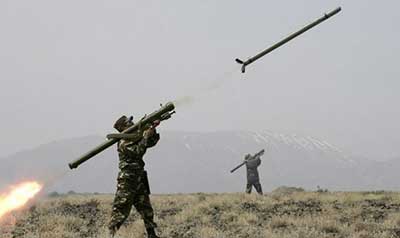Date : 30/11/2023
Relevance: GS Paper 3 – Internal Security
Keywords: ICT, OEM, GPS, Conventional Warfare
Context-
The evolution of military affairs has historically been driven by emerging technologies, ranging from gunpowder and steam engines to the Information and Communications Technology (ICT) revolution. High-tech warfare often aims to minimize human involvement. However, recent events, such as the ongoing conflict in the Middle East, highlight the effectiveness of low-grade technology. In the face of tactics employed by groups like Hamas, which successfully used underground tunnels to evade detection and infiltration by the Israeli Defence Forces, it becomes evident that even in the digital age, militaries must be prepared for analog warfare scenarios, where reliance on state-of-the-art technology may not be sufficient.
The Allure and Limitations of High-Tech Military Equipment:
The allure of high-tech military equipment lies in the belief that it can eliminate human error and enhance the efficiency of warfare. Yet, the reality is that while machines boast advanced algorithms, they still require human operation and maintenance. The fragility of these sophisticated systems is exposed when faced with the harsh realities of war. The cost of ensuring robustness, reliability, and maintainability often leads to compromises, resulting in equipment vulnerabilities and failures on the battlefield.
Moreover, the dependency on external agencies, Original Equipment Manufacturers (OEMs), and specialized integrators introduces a critical challenge. In times of conflict, the lack of exclusive ownership and control over the entire system makes armed forces susceptible to disruptions. Issues like GPS denial can have cascading effects, impacting navigation, weapon delivery, and overall operational capabilities.
Unintended Consequences of Technological Dependency:
The increasing reliance on technology not only affects the hardware but also shapes the training of military personnel. The adoption of high-tech equipment often drives training programs, diverting focus from fundamental skills to operating complex gadgets. The introduction of maintainer-operator models can compromise the training of both operators and maintainers, potentially reducing overall preparedness.
As an example, the Indian Navy's decision to train all its officers as engineers in the mid-1990s reflects the broader trend of aligning human resources with technological advancements. However, the jury is still out on whether such decisions contribute positively to military effectiveness.
Asymmetric Nature of Modern Conflicts:
Contemporary conflicts have taken on an asymmetric nature, transcending traditional domains of warfare. While conventional warfare remains a possibility, the battleground now extends to space, cyber, and information warfare. Adversaries can exploit digital vulnerabilities while also employing unexpected, low-grade technologies for strategic advantage.
Recent instances, such as the 2020 Galwan clash between Chinese and Indian forces, highlight the effectiveness of asymmetric approaches. The use of sticks, stones, and barbed wires demonstrated that even in the face of advanced militaries, unconventional tactics can yield surprising results.
Rethinking Military Engagement:
The current landscape necessitates a fundamental rethink of how military operations are conducted. The attractiveness of technology must be tempered with an understanding of its limitations. Simplicity, robustness, security, and reliability often conflict with the complexities of modern technology.
To ensure military readiness, armed forces must possess the capability to function independently of external support agencies once deployed in conflict zones. This includes scenarios where access to laptops, diagnostic tools, and OEM representatives is limited. The range of preparedness should span from the utilization of basic tools like sticks and stones to the strategic deployment of advanced technologies for deterrence.
The Need for a Holistic Approach:
While technology remains a critical aspect of modern warfare, it should not overshadow the importance of a holistic approach. A balance between cutting-edge advancements and timeless, reliable tactics is essential. Emphasizing simplicity and robustness in military equipment can enhance overall preparedness and resilience against unforeseen challenges.
Conclusion:
In navigating the complex landscape of modern warfare, it is crucial to recognize that technology, while a powerful tool, is not a panacea. The limitations of high-grade military tech, the unintended consequences of technological dependency, and the asymmetric nature of contemporary conflicts underscore the need for a comprehensive and adaptive approach to military engagement.
Armed forces worldwide must strike a balance between embracing advancements and retaining the ability to operate in analog conditions. As we continue to witness the evolution of military affairs, the lessons from recent conflicts emphasize the importance of preparedness for a spectrum of possibilities, from low-grade, unconventional tactics to high-tech strategic deterrence.
Probable Questions for UPSC mains Exam-
- Examine the complex relationship between military technology and warfare, highlighting the challenges posed by the allure and limitations of high-tech military equipment. How can armed forces navigate the fragility of sophisticated systems and address issues like external dependencies during conflicts? (10 marks, 150 words)
- Discuss the implications of the increasing reliance on technology in military training programs. How does this shift impact the fundamental skills of military personnel, and what measures should be taken to ensure a holistic approach that balances the adoption of advanced equipment with the preservation of essential skills in the armed forces? (15 marks, 250 words )
Source- The Indian Express








